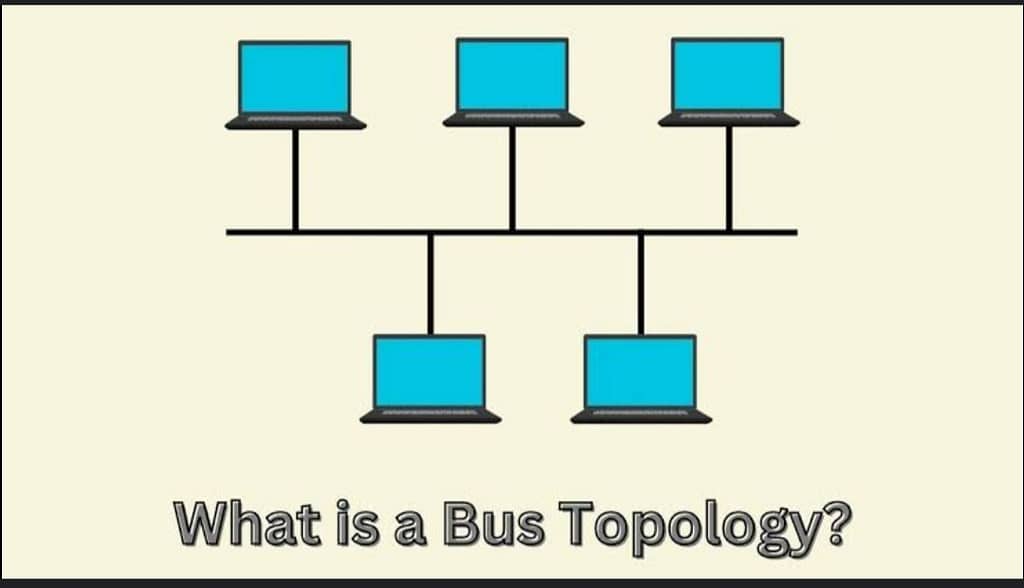Network topology and its types
A physical layout arrangement of connected devices in a network is called topology. It is the shape of a network. Topology is one of the best network ways to send messages or elements in different ways.
Importance
Topology is essential in designing and understanding computer networks, ensuring efficient data transfer and communication.
It helps data analysis uncover patterns and relationships in complex data sets. It is essential in robotics for motion planning, ensuring robots can navigate complex environments efficiently.
Types
Topology has many types, each important and beneficial in different ways. The types are as follows:
- Bus topology
- Star topology
- Ring topology
- Mesh topology
1)Bus Topology

In this, all devices are connected to a single central cable. In this, we can connect to another device through a cable.
- Single cable connection: All devices share a single communication cable.
- Terminators at both ends: The cable has terminators at both ends to prevent signal reflection.
- Data transmission: Data is transmitted in one direction at a time and reaches all nodes, but only the intended receiver accepts it.
- Broadcast Communication: When a device sends data, all devices receive it, but only the intended receiver processes it.
Advantages:
- ✔Cost-Effective: Less cable required than other topologies.
- ✔ Easy to Install: Simple setup with minimal hardware.
- ✔ Scalability: Devices can be easily added by expanding the bus.
- ✔ Cost-Effective: Less cable required than other topologies.
Disadvantages:
- ✖ Risk of network failure: If the main cable fails, the entire network goes down.
- ✖ Slow performance: More devices lead to network congestion and slower data transmission.
- ✖ Difficult troubleshooting: Errors can be difficult to identify.
2) Star Topology

In this type of topology, devices are connected to the central hub. This type is one of the important types of topology. Used in computer networks very popularly.
3) Ring Topology

In a ring topology, to another device, the last device is connected to the first device. In this, it connects two other devices to make some circle.
4) Mesh Topology

Every device in the network is physically connected to every other device in the network.
Benefits
Topology helps to optimize design and improve data transfer.
It helps lead to new discoveries. It is understood in GIS.
It also advances in Mathematics.
Conclusion
It plays a vital role in understanding complex systems and relationships across various. It is very useful in all conservation. To transmit the data. Topology is best in network type. Topology is to improving data transfers and optimize design.

2 Comments